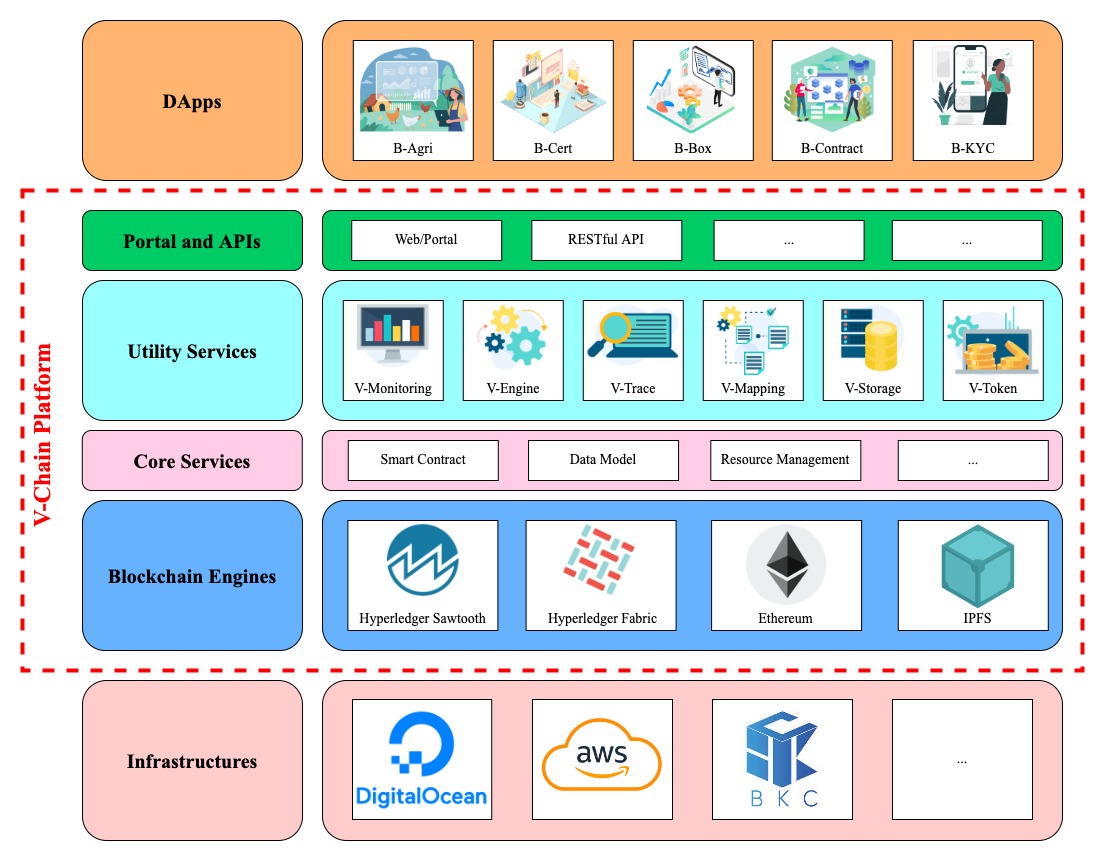Exploding in early 2018, Blockchain has become one of the technologies that has changed the world. The development of technology, leading to the birth of many blockchain networks such as Ethereum, Hyperledger Fabric, Avalanche, etc., makes programmers need more time to research on technology and develop decentralized applications - this is also the reason for the birth of the V-Chain platform.
What is V-Chain?
V-Chain is a platform that supports programmers in developing and deploying decentralized applications on a variety of existing blockchain networks. Currently, the programming time for decentralized applications can last up to several months, but with V-Chain, this time can be shortened to just a few days. V-Chain allows users to easily define application operations, the roles of actors, as well as the data they want to write to a specific blockchain network. From there, V-Chain generates APIs/SDKs to support programmers in communicating with the blockchain network. The platform also supports the deployment of applications, or even a private blockchain network.

The V-Chain platform has an overall architecture of 04 layers, respectively: blockchain network, core services, utility services, service portal and APIs.
1. Blockchain Network
V-Chain is designed to support a variety of blockchain networks including public and private networks such as Hyperledger Sawtooth, Hyperledger Fabric, Ethereum, etc. This allows users to deploy a node in the network themselves, or create a private blockchain to increase security and make transactions quickly.
2. Core Services
The purpose of core services is to enable upper layers to communicate with underlying blockchain networks in a unified and easy way. Some notable core services include:
- Smart contract: V-Chain uses a common, consistent format for users to generate smart contracts for different blockchain platforms.
- Data model: defines a unified model for storing data on the blockchain network.
- Resource management: to connect and distribute resources to applications, and to keep logs from nodes, service and application read and write operations at upper layers.
3. Utility Services
Utility services are developed to support the deployment of decentralized applications in companies, organizations and governments. The services will help blockchainize the organization's existing operations. Some of the services on the V-Chain platform currently include:
- V-Engine: Users can choose which blockchain network to record data on such as Hyperledger Fabric, Ethereum or IPFS, or create their own blockchain
- V-Mapping: Users define the data stored on the chain, the relationship between the data
- V-Trace: Users can retrieve data on the network and display it on their applications.
- V-Storage: is a decentralized storage service based on IPFS technology
- V-Monitoring: A service that helps users monitor the status of transactions, nodes and the entire blockchain network.
- V-Token: A service that automatically deploys tokens for the blockchain network in the V-Chain ecosystem.
4. Service Portals and APIs
V-Chain provides the main communication method through REST API and Web/Portal.
The V-Chain platform was born to provide a new and effective solution for the development and deployment of decentralized applications. The platform contributes to promoting the application of blockchain technology in current activities, to bring service quality and trust to users.




